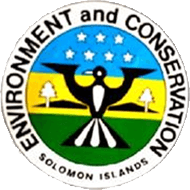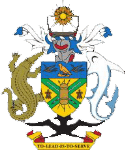Environment Unit
Conservation Unit
Project Staff
- Details
- Category: Environment and Conservation Division
 Environment and Conservation Division (ECD) was first established in 1985 through a Cabinet directive. The Division attained its legal status and became institutionalized later under section 5 of the Environment Act 1998. Despite its relatively small size, ECD currently administers three Acts of Parliament including Environment Act 1998, Wildlife Protection and Management Act 1998 and Protected Areas Act 2010, with their respective Regulations. The Division’s key functions and areas of responsibility are stipulated in these three legislative frameworks.
Environment and Conservation Division (ECD) was first established in 1985 through a Cabinet directive. The Division attained its legal status and became institutionalized later under section 5 of the Environment Act 1998. Despite its relatively small size, ECD currently administers three Acts of Parliament including Environment Act 1998, Wildlife Protection and Management Act 1998 and Protected Areas Act 2010, with their respective Regulations. The Division’s key functions and areas of responsibility are stipulated in these three legislative frameworks.
Vision
To ensure the Environment and Natural Resources of Solomon Islands are protected, managed and sustainably used for the maximum benefit of the Government and people of Solomon Islands
Mission
To improve and strengthen the national institutional and administrative capacity of the division to be able to promote the protection, conservation and sustainable management of the use of the environment and natural resources of Solomon Islands.
Core functions and responsibilities
The overarching function of the Division is to protect, restore and enhance the quality of the environment of Solomon Islands, having regard to the need to promote sustainable development. The Division in this regard not only is concerned with meeting environmental specific objectives but, achieving those objectives in a way that does not undermine and cost the country socio-economically. This is the primary challenge for the Division. Given the enormity of this responsibility, the Division always strives to achieve the most desirable outcome by working in partnership and collaboration with other relevant national level agencies and non-government organizations (NGOs).
Apart from its statutory responsibilities, as outlined below, other important duties implemented by the Division are derived from the various regional and global treaties and programs that come under the purview of the Division. This is to fulfill the country’s national obligations and commitments, as a Party.
- environmental impact assessment;
- environmental auditing;
- protected area management and development;
- biodiversity planning and conservation;
- waste management and pollution prevention;
- environmental planning;
- invasive species management;
- environmental awareness and education;
- biological safety or biosafety;
- international trade in wildlife;
- biodiversity and bio-prospecting research;
- chemicals management; and
- sustainable development issues.
In undertaking its functions the Division always ensures the following principles are heeded: precautionary principle, intergenerational equity, ecosystem approach, conservation of biological diversity and ecological integrity and improved evaluation and pricing of environmental resources.
International Obligations
At the regional and international level, the Division acts as the national focal point for various environmental agreements, commonly known as multilateral environment agreements (MEAs). Being a member of these MEAs, the Division is responsible for the Waigani Convention (Hazardous waste); SPREP Convention (Natural Resources and Environment of South Pacific); Stockholm Convention (Persistent Organic Pollutants); Cartagena Protocol on Biosafety (Living Modified Organisms - LMO); Convention on Biological Diversity (Biodiversity); Convention on International Trade in Endangered Species of Flora and Fauna - CITES (International Trade in Wildlife); World Heritage Convention (World Heritage); and Nagoya Protocol (Genetic Resources).
Other important duties of the Division are shaped by programs designed and developed under the above MEAs. Changes in government policy orientation and priorities, from time to time, oftentimes have particular implication for the Division’s work plan and programs, especially in accommodating the new policy decisions.
Programmatic Approach to Project Design
The two programs developed by the Division to seek budget support for its development projects, for the next four years, clearly spell out the strategic objectives and outputs that are vital to the design of its work program or action plan. Formulation of these two programs was largely based on Objective 7 of the National Development Strategy (Effectively respond to Climate Change and Manage the Environment and Risks of Natural Disasters). In designing the programs with their respective outcomes and outputs the Division gives considerable recognition to the importance of its statutory responsibilities, to the process.
Program 1 (Ecosystem and Biodiversity Conservation, Management and Restoration) emphasizes sustainable utilization of biodiversity and protecting important ecosystem services as its strategic objective, with various expected outputs. These outputs are essential in supporting the Division to implement the Wildlife Protection and Management Act 1998 and Protected Areas Act 2010 as well as relevant programs and requirements under the SPREP Convention, CBD, CITES and World Heritage Convention. Implementation of this program will be reflected in the action plan or work program of the Division.
Program 2 (Development, Waste Management and Pollution Control) constitutes the other top priority area for the Division as required under the Environment Act 1998 and relevant provisions in the Waigani Convention, SPREP Convention and Stockholm Convention. Developed with the objective to promote and enhance the environment and social aspects of economic developments, this program stresses the importance of using appropriate environmental safeguards and tools in development actions. Its several outputs are related more to controlling the direct drivers of change such as land use change, which has the potential to lead to pollution and other negative environmental consequences.
Essentially the Division’s work program will comprise activities derived from these two programs considering their respective scope and outputs.
Projects
- National Implementation Plan on Persistant Organic Pollutants ( NIP/POPs)
- Mataniko Clean Up and Rehabilitation Program
- Pacific Risk Resilience Project ( PRRP)
- International Union for Conservation of Nature Projects
- Coral Triangle Initiative on coral reefs, fisheries and food security ( CTI-CFF)
- Turtle Conservation and Eco-tourism Development Project
- EDF 10 -PACWASTE Project on hazardous waste stockpile removal/ stabilization a regional training (healthcare waste, asbestos and E-waste).
- GEFPAS Pacific Pops Release Reduction Project on hazardous waste management, safe disposal of unwanted pesticides and school laboratory chemicals and used oil management
- Details
- Category: Environment and Conservation Division

